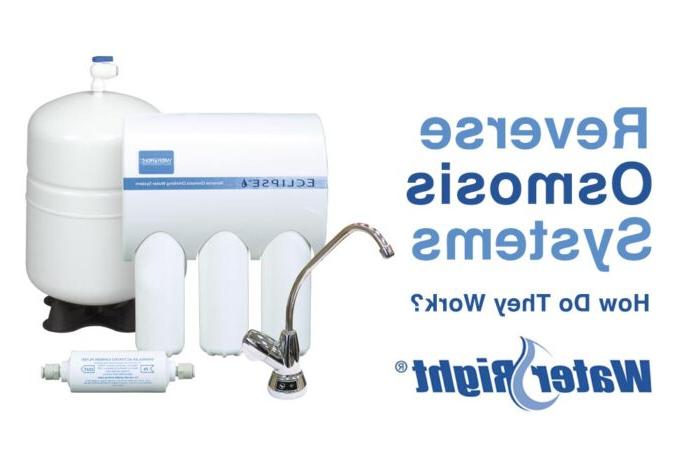Maybe there’s a beeping noise and a flashing light in the basement, or you notice your home’s water quality isn’t quite right. You check your unit’s brine tank and realize it’s time to add more water softener salt.
At the home improvement store, you find several different options. Which one do you choose? Is there a difference between pellets, cubes, crystals, and blocks of salt? If you have an Impression® or Sanitizer® unit in your home, will a certain option work best?
To answer those questions, we asked Water-Right Technical Service Manager, Kirk Guthrie, to help explain.

Kirk Guthrie, Water-Right Technical Services Manager
Water Softener Salts | The Simple Answer
To keep it easy for homeowners to understand, we almost always recommend using solar salt crystals when refilling the brine tank.
If you have a unit using zeolite, such as our exclusive Crystal-Right media, then it is not just a recommendation – refilling with solar salt is a REQUIREMENT. As Kirk explains, that’s because additives in other types of salt can damage zeolite media.
“For those pieces of equipment, it is imperative that homeowners use only solar salt with absolutely no additives, resin cleaners, or iron-fighting ingredients,” he says. “You don’t want any of those additives to get into zeolite-based water treatment equipment.”
For Water-Right units, you should never use salt with additives in any Sanitizer® systems.
Solar salt is easy to find and is typically one of the more affordable selections.
All our dealers know to recommend solar salt to their customers. However, Kirk says other dealers are often uninformed. They may not understand what type of media your system uses. So, if you ask about a problem with iron, they may suggest pouring in salt with additives that will damage your equipment.
“If you have zeolite media in your equipment, they just told you to use salt that wrecks your unit,” Kirk says.
What Makes Solar Salt Different?
What sets solar salt crystals apart from the other options? It’s purity – plain and simple. Kirk explains the natural process of manufacturing the product.
“What they do is they flood big vats with brine and let the sun evaporate the water, hence the name solar salt,” he says.
What you get is 100% pure salt that is very effective at treating hard water. On the other hand, the salts that claim to have “special formulas” are less pure.
“They put miniscule amounts of acid cleaners in those salts, which are the chemicals that can destroy the zeolite,” Kirk says.
When it comes to choosing crystals over pellets and blocks, Kirk emphasizes once again that it comes down to purity.
Imagine holding salt crystals in your palm. If you made a fist, the granules wouldn’t stick together. You can’t form it into a ball. So how are salt pellets and salt blocks made?
“They put a bonding agent in the salt to form the pellets and blocks,” Kirk says. “That’s essentially glue, which is just more impurities being added to the salt.”
Resin-based water softeners may not be adversely effected by such things, but Water-Right still believes pure solar salt is the right option.
“As a company, we want people to use extra coarse solar salt because it is readily available and we’d rather not ‘muddy the water,’ so to speak, with additives.”
Another potential problem with blocks of softener salt is that it takes longer to dissolve the amount needed to treat the water. Solar salt is more soluble, and it has more surface area that comes in contact with the water during regeneration of the media. If you insist on using block salt in your unit, contact your dealer so that the water softener can be programmed correctly to compensate for the slower dissolving salt.
Learn more about how water softeners work and why you need salt here on our blog.
Salt Delivery Service and the Salt Monitor
If you have questions about water softener salt, or you’re concerned you’ve added the wrong type to your unit, contact a Water-Right expert for help.
You can also ask your local water treatment dealer about salt delivery services. Many who sell Water-Right equipment will deliver salt to your home and refill your brine tank on a regular basis.
“Because who wants to be hauling around 40-lb bags of salt?” Kirk asks.
If you have very hard problem water, you may go through as much as 80 lbs. of salt per month. However, water that only requires minor softening uses as little as 15 lbs. per month.
Regardless, Kirk points out that our tanks can hold as much as 300 to 400 lbs. of salt. So, salt delivery is a convenient service that you may only need a few times each year.
You’ll be sure the right type of salt is being put into your home’s water treatment equipment, and you’ll save your back from all that muscle-straining work.
If you do plan to refill your own brine tank, certain equipment from Water-Right now comes with our innovative salt monitor to make sure you never forget.
It continually measures salt levels in the brine solution and alerts you with sound and light alarms when you need to add more. Ask your dealer if this patented innovation can be added to your unit. It’s a great way to make sure your home’s water is always softened to your expectations.

The Water-Right salt monitor
Find the right contractor for you.
Recent Homeowner Resources

Can In-line Filtration Fix All Water Problems?

What To Look For In Your Water Softening Equipment Provider?



